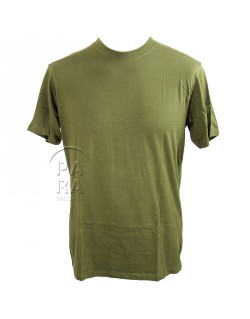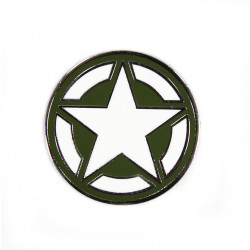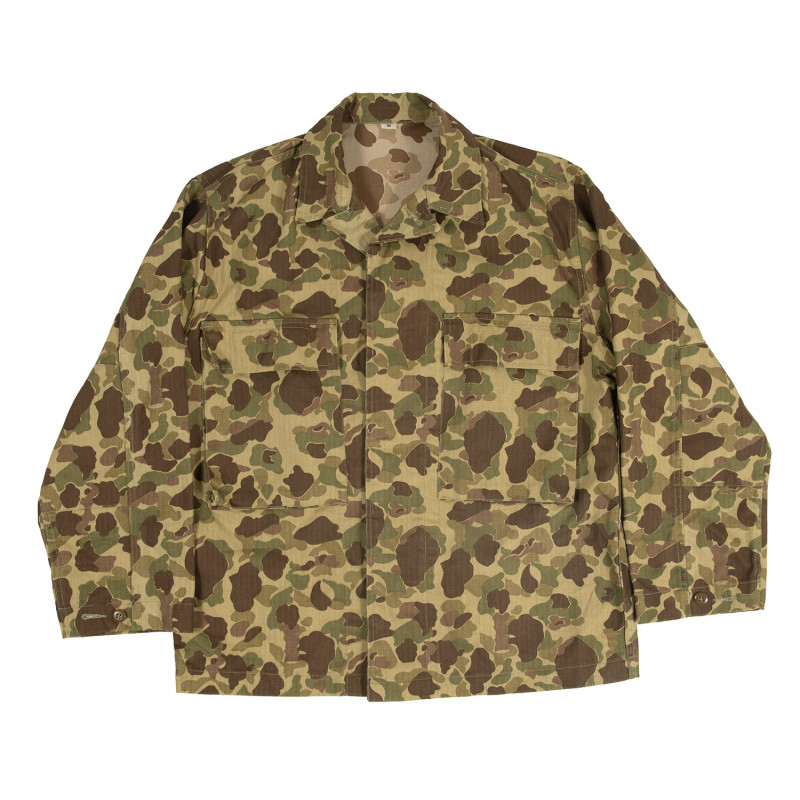







Jacket, HBT, Camouflage U.S. Army, ATF
Superb reproduction of the US Army camouflage jacket.
American conception. Like the HBT OD jackets, they are oversized, about 4 inches (10cm) longer than a normal jacket of the same size. This is historically correct, as they were designed to be worn over the combat jacket. They may therefore look ‘too big’, but that's how they should be worn.
Made in the USA. It's recommended to order one size down.
This jacket was used briefly in Europe during the Battle of Normandy (2nd Infantry Division, 30th Infantry Division, 41st Armored Infantry Battalion of the 2nd Armored Division, for example).
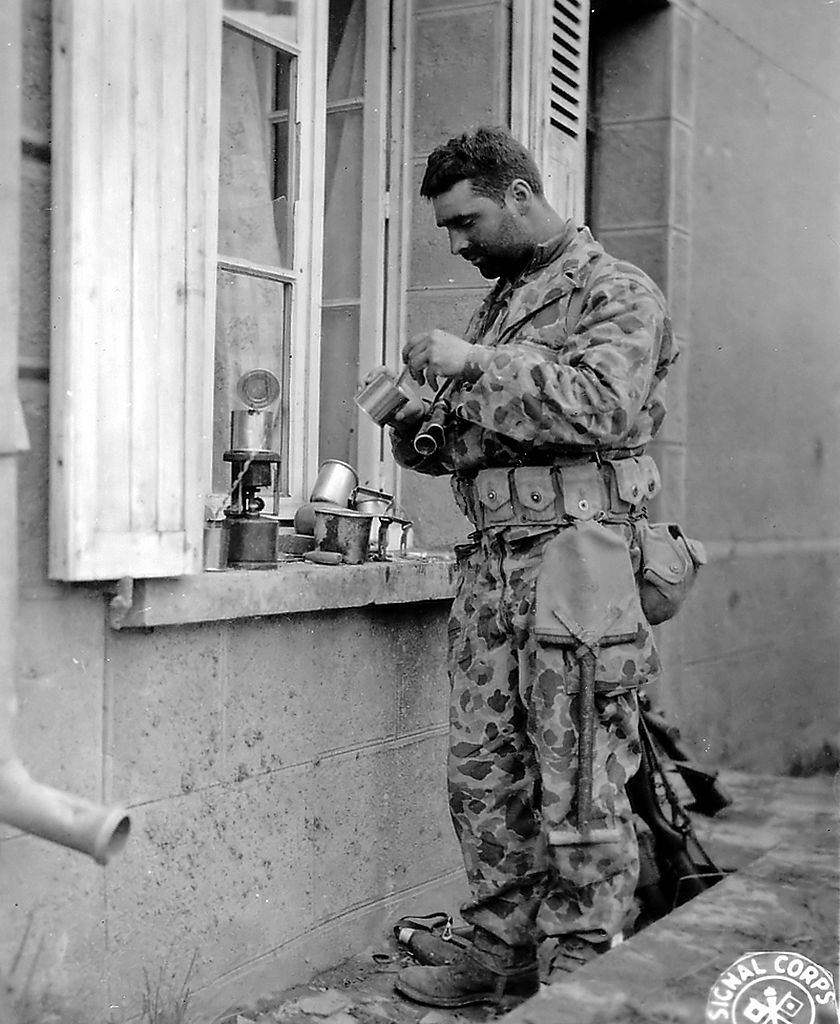
Product Details
You might also like
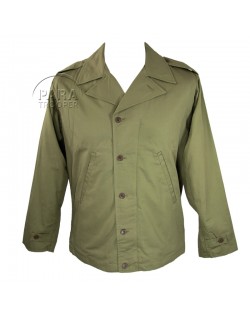
- On sale!
Jacket, Field, M-1941
Reproduction of the U.S. Army’s standard-issue M-1941 field jacket. Made from cotton poplin and lined with soft flannel, the M-1941 jacket was worn by all U.S. Army GIs throughout World War II. Lightweight, practical, and versatile, it became one of the most iconic pieces of the American military uniform during the conflict. US sizes.
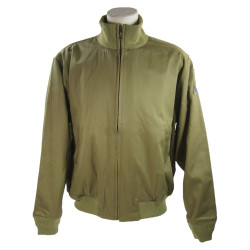
- On sale!
Jacket, Winter (Tanker)
Reproduction of the U.S. Army Winter Combat Jacket. Made from OD3 cotton twill and lined with brown kersey wool, this "tanker" jacket has a full-length zipper on the front, knit collar, cuffs and waistband. The winter combat jacket was developed in 1941, for issue to crews of armored vehicles. it was nevertheless worn by other combat soldiers, and especially by officers... Often worn by tank crews and motorcyclists, the tanker jacket and pant or combat jacket and bib (the name "tanker jacket" seems to be the term mostly used) was also widely used by infantry and airborne officers, 504th PIR paratroopers, fighter pilots, Naval Beach Battalions, WAC, Nurses.. The jacket and pant/bib was made of the same material and had the wool blanket type lining. US sizes.
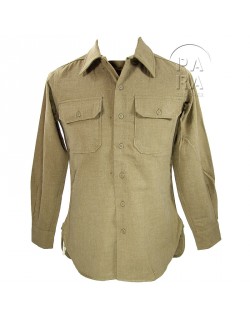
- On sale!
Shirt, Wool, M-1937 (Mustard)
Reproduction of the standard US Army M-1937 shirt in wool and acrylic. Model used by all the US Army even during D-Day, with buttons behind a fly and a flap designed for protection against gases. Used by all GI's during all the campaigns in Italy, Normandy, Ardennes ...
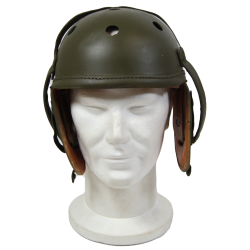
- On sale!
Helmet, Tank, US Army
Reproduction of the shock-absorbing helmet intended for US Army tank and armored vehicle crews. Nice replica, fitted with snap fasteners.
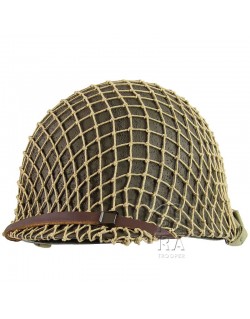
M1 Helmet, US type, complete, eco
M1 Helmet, US type, complete, eco. Repainted as an original one, with swivel bails and replica canvas straps, delivered with liner and net. Perfect for reenacting.
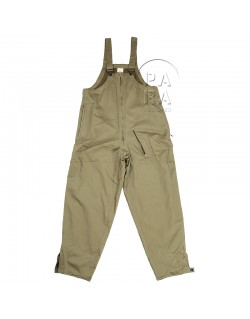
Bib, Tanker, 2nd pattern
Reproduction of the 2nd pattern tanker bib. Often worn by tank crews and motorcyclist s, the tanker jacket and pant or combat jacket and bib (the name "tanker jacket" seems to be the term mostly used) was also widely used by infantry and airborne officers, 504th PIR paratroopers, fighter pilots and Naval Beach Battalions on D-Day. It was warmer than the A-2 jacket and more comfortable to wear. The jacket and pant/bib was made of the same material and had the wool blanket type lining.

Patch, 2nd Armored Division
Shoulder sleeve insignia of the 2nd Armored Division Hell On Wheels . Campaigns: - North Africa. - Sicily. - Normandy, Omaha Beach, Carentan, Cobra. - Belgium. - Germany.
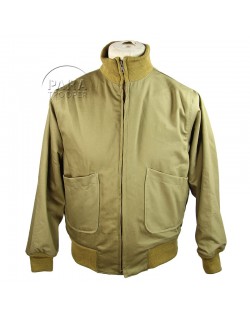
Jacket, Winter (Tanker), 1st type
Reproduction of the U.S. Army Winter Combat Jacket, first pattern, easily identified by its patch pockets sewn directly onto the front, unlike the second model. Made from OD 3 cotton twill and lined with brown kersey wool, this "tanker" jacket has a full-length zipper on the front, knit collar, cuffs and waistband. The winter combat jacket was developed in 1941, for issue to crews of armored vehicles. it was nevertheless worn by other combat soldiers, and especially by officers... Often worn by tank crews and motorcyclists, the tanker jacket and pant or combat jacket and bib (the name "tanker jacket" seems to be the term mostly used) was also widely used by infantry and airborne officers, 504th PIR paratroopers, fighter pilots, Naval Beach Battalions, WAC, Nurses.. The jacket and pant/bib was made of the same material and had the wool blanket type lining.
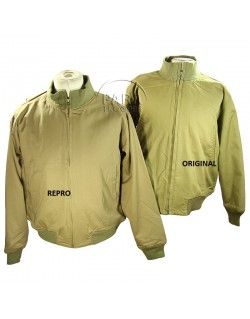
Jacket, Winter (Tanker), Luxe
High quality reproduction of the U.S. Army Winter Combat Jacket. Made from olive drab #3 cotton twill and lined with brown kersey wool, this "tanker" jacket has a full-length zipper on the front, knit collar, cuffs and waistband. The winter combat jacket was developed in 1941, for issue to crews of armored vehicles. it was nevertheless worn by other combat soldiers, and especially by officers... Often worn by tank crews and motorcyclists, the tanker jacket and pant or combat jacket and bib (the name "tanker jacket" seems to be the term mostly used) was also widely used by infantry and airborne officers, 504th PIR paratroopers, fighter pilots, Naval Beach Battalions, WAC, Nurses.. The jacket and pant/bib was made of the same material and had the wool blanket type lining.
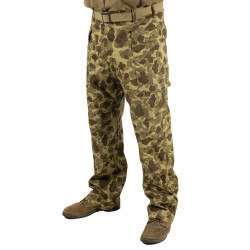
Trousers, HBT, Camouflage, U.S. Army, ATF
Superb reproduction of the US Army camouflage trousers. American conception. It has two cargo pockets, an anti-gas gusset, rectangular reinforcements at the knees and buttoned tabs at the bottom of the legs. These trousers were used briefly in Europe during the Battle of Normandy (2nd Infantry Division, 30th Infantry Division, 41st Armored Infantry Battalion of the 2nd Armored Division, for example). US sizes. Order your normal waist size. All inseams are 33".
Customers who bought this product also bought:

Grenade, MKII, metal
THIS ITEM IS NOT SHIPPED OUTSIDE FRANCE. MKII pineapple grenade in metal painted in green, perfect for re-enactment or mannekin.
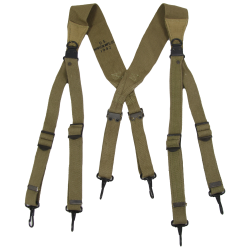
Suspenders, Belt, M-1936, HINSON MFG. CO. 1942, Mint condition
Nice genuine WWII US Army khaki webbing suspenders, with adjustable straps and hooks. These were intended for carrying the pistol belt or cartridge belt, as well as the M-1936 canvas field bag. Manufactured by Hinson Mfg. Co. and dated 1942. Complete and in mint condition, never issued.
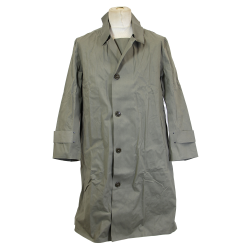
Raincoat, Rubberized, M-1938, US Army
Perfect replica of the US Army issue M1938 rubberized dismounted raincoat.
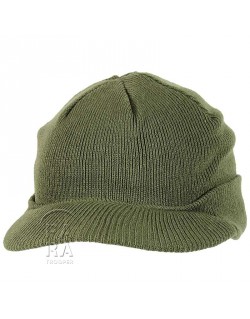
Cap, Wool, "Beanie"
Olive drab cap, standardized in February 1942 for wear in cold weather under the steel helmet. Nicknamed "Beanie" or "Jeep Cap", it has a short stiff brim and a turn-down to cover the ears. One size fits all.
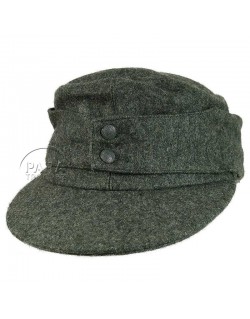
Cap, M1943, German, Feldgrau
Nice reproduction of the German feldgrau wool M1943 cap.
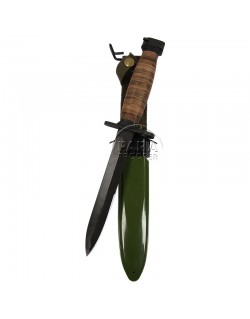
Bayonet USM4, PAL, for USM2 carbine
Reproduction of the standard USM4 bayonet for the USM2 carbine with USM8A1 plastic scabbard. Doesn't fit a genuine carbine.

Superb reproduction of the US Army camouflage jacket.
American conception. Like the HBT OD jackets, they are oversized, about 4 inches (10cm) longer than a normal jacket of the same size. This is historically correct, as they were designed to be worn over the combat jacket. They may therefore look ‘too big’, but that's how they should be worn.
Made in the USA. It's recommended to order one size down.
This jacket was used briefly in Europe during the Battle of Normandy (2nd Infantry Division, 30th Infantry Division, 41st Armored Infantry Battalion of the 2nd Armored Division, for example).

check_circle
check_circle

The historical artifacts for sale at PARATROOPER’s are intended for collectors, history enthusiasts, historians and museum curators.
These items do not glorify or promote any of the political, ideological or racial opinions related to the global conflicts that bathed the 20th century in blood.
Besides, we remind you that Article R.645-1 of the French Penal Code establishes fines applicable to fifth class contraventions (except in the specific cases of a filming, show or exhibition which refer to historical events) for any individual who wears a uniform, insignia or symbol reminiscent of those worn by members of the various organizations declared criminal in application of Article 9 of the Charter of the International Military Tribunal annexed to the London Agreement of August 8, 1945 – SS, SD, Gestapo, Nazi leaders (the Führer, the Reichsleitung, the Gauleiters and their main collaborators, the Ortsgruppenleiter, the Zellenleiter and the Blockleiter), or reminiscent of those worn by any person found guilty, by a French or International Jurisdiction, of one or several crimes against humanity established by Articles 211-1 to 212-3 or mentioned in Law No. 64-1326 of December 26, 1964.
The Code provides additional penalties, including the confiscation of the items used or intended for committing the offence.




